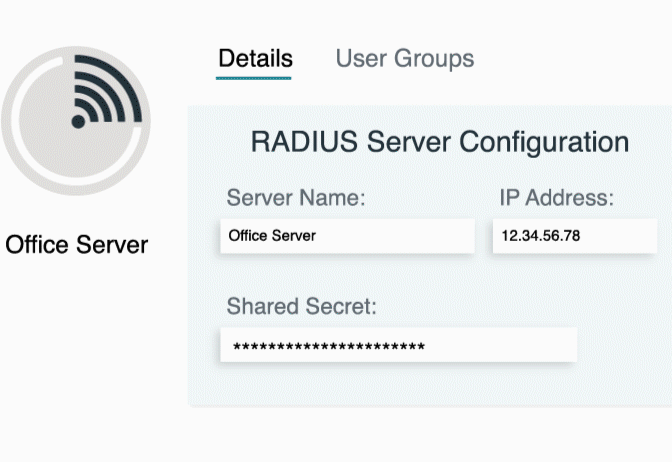Updated on February 14, 2025
Layer 3 switches are key tools in modern networking, improving both efficiency and flexibility for enterprise networks. They combine the features of Layer 2 switches and Layer 3 routers in the OSI model, making them a versatile solution for today’s complex IT environments.
This post will explain what a Layer 3 switch is, how it works, and why it’s important for modern networks.
What Is a Layer 3 Switch?
A Layer 3 switch operates at both Layer 2 (Data Link) and Layer 3 (Network) of the OSI model. Essentially, it combines the functions of a Layer 2 switch, which forwards data based on MAC (Media Access Control) addresses, with a router’s Layer 3 capabilities, enabling forwarding based on IP (Internet Protocol) addresses.
Unlike Layer 2 switches, a Layer 3 switch can perform routing between subnets (known as inter-VLAN routing). This reduces the need for separate routers in a network. Its ability to combine switching and routing makes a Layer 3 switch ideal for networks that need fast and efficient communication within the system.
Key Differences Between Layer 2 and Layer 3 Switches
- Layer 2 Switch:
- Operates at the Data Link Layer.
- Forwards traffic based on MAC addresses.
- Handles internal device communication within a VLAN.
- Layer 3 Switch:
- Operates at both Data Link and Network Layers.
- Forwards traffic based on IP addresses in addition to MAC addresses.
- Enables routing between VLANs or subnets.
By blending the functionalities of switches and routers, Layer 3 switches provide a streamlined solution for enterprise networks with growing demands.
Learn more about the differences between Layer 2 and Layer 3 Switches in this post: Layer 2 vs. Layer 3 Switches: What’s the Difference?
How Does a Layer 3 Switch Work?
Layer 3 switches integrate the hardware capabilities of a switch with routing functionalities typically associated with routers. Here’s how they operate in detail:
Architecture and Operation
- Switching Functionality: At its core, a Layer 3 switch forwards packets within a single VLAN using MAC address tables, similar to a Layer 2 switch.
- Routing Functionality: For inter-VLAN communication, Layer 3 switches consult routing tables or ARP (Address Resolution Protocol) caches to determine the best path for forwarding IP packets.
- Packet Processing Speed: Leveraging dedicated hardware, a Layer 3 switch delivers higher performance for routing tasks compared to traditional routers, which rely on CPU-based software routing.
Supported Protocols
Layer 3 switches often support common networking protocols such as:
- OSPF (Open Shortest Path First) and RIP (Routing Information Protocol) for dynamic routing.
- VLAN tagging (802.1Q) to manage virtual LANs.
- Static routing for predefined routes.
Example Use Case
Imagine a company with multiple VLANs (e.g., HR, Finance, IT). While a Layer 2 switch allows communication within each VLAN, a Layer 3 switch seamlessly routes data between VLANs, ensuring efficient interdepartmental connectivity without requiring an external router.
Layer 3 Switches vs. Routers
Both Layer 3 switches and routers facilitate data routing, yet they cater to different scenarios.
| Layer 3 Switch | Router | |
| Primary Purpose | Routing within networks | Routing between networks |
| Performance | High-speed, hardware-based | Lower throughput, CPU-based |
| Cost | More cost-effective | Generally more expensive |
| Use Cases | Campus and enterprise networks | WAN and internet connectivity |
When to Use a Layer 3 Switch Over a Router
- High Throughput: Ideal for environments requiring high-speed communication between VLANs.
- Simplified Network Design: Reduces the need for additional hardware.
- Cost Efficiency: Serves as a more affordable solution for intra-network routing compared to standalone routers.
Advantages of Layer 3 Switches
Layer 3 switches are favored in enterprise-level setups for several reasons:
- High-Speed Data Handling: With dedicated hardware processing for both Layer 2 switching and Layer 3 routing, they process data faster than most traditional routers.
- Reduced Latency: Fewer hops within the network result in quicker data transmission, enhancing application performance.
- Scalability: Layer 3 switches easily accommodate growing network demands, making them future-ready for expanding businesses.
- Simplified VLAN Management: Inter-VLAN routing becomes efficient, supporting smoother workflows and collaboration.
Common Applications
Layer 3 switches are indispensable in various networking scenarios:
- Enterprise Networks: Simplify complex, multi-department setups by enabling seamless inter-VLAN communication.
- Data Centers: Optimize traffic flow between servers by combining switching and routing functions.
- Campus/WAN Networks: Provide high-speed routing in educational institutions or multi-building corporate environments.
Real-World Example
A university network with multiple departments, dormitories, and faculty buildings can streamline its connectivity using Layer 3 switches. Routing between academic subnetworks becomes more efficient, supporting seamless access to shared resources like library systems or online tools.
Appendix: Key Terms
- OSI Model: A conceptual framework that standardizes network functions across seven layers.
- Layer 2 Switching: Operates at the Data Link Layer, forwarding data based on MAC addresses.
- Layer 3 Routing: Operates at the Network Layer, forwarding data based on IP addresses.
- VLAN Tagging: VLAN Tagging assigns unique identifiers to VLAN traffic, enabling segmentation.
- Routing Table: A database used by routers and Layer 3 switches to determine the best path for transmitting data.
- ARP (Address Resolution Protocol): Resolves IP addresses to MAC addresses for communication within a network.
- OSPF (Open Shortest Path First): A routing protocol that finds the shortest path between devices.






